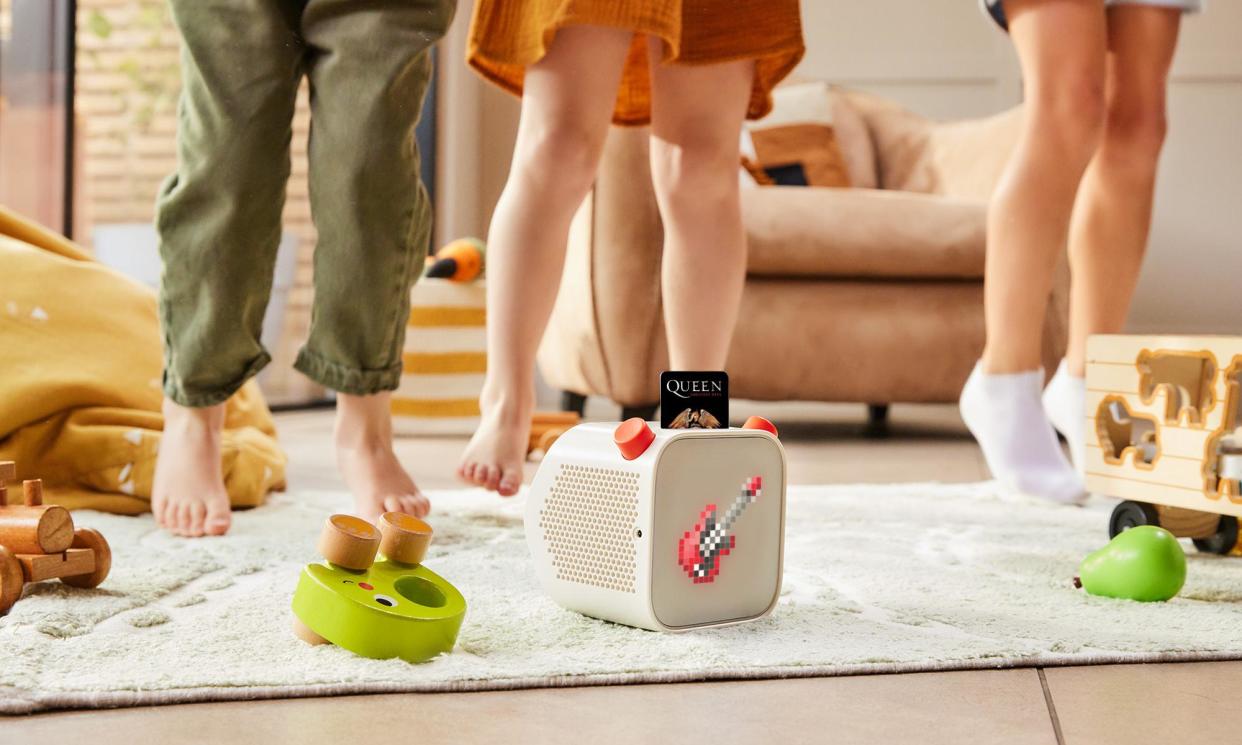Designer clothes and £90 toys: rise of kids’ birthday gift lists heaps pressure on parents

When Lizzie, a mother of one from Oxford, was invited to the third birthday party of a child from her antenatal group, it wasn’t the date or the time that stopped her attending.
In the corner of the bubble-themed invitation, there was a link to a digital gift registry, where presents ranged from Brio wooden toys and an £89.99 Yoto music player to a play kitchen. There was a list of favourite brands, including the sustainable clothing designer Mini Rodini, and the Arket label.
“It put me off going,” she said. “The shops on their list were so expensive. I would’ve been paying upwards of £30 for a curated wooden toy or some stylish clothes.”
Lizzie is not alone: gift lists are becoming increasingly common as parents are becoming more prescriptive about what people should buy their children. While some are making specific requests for high-end toys, others are asking for hand-me-downs or charity shop finds in an effort to save money and avoid excess waste.
“More and more people are using online wishlists,” says Caner Tankir, founder of the gift-giving company Wishbob. “We have seen an increase of 373% in the first quarter of this year, compared to the same period last year.”
Tankir said they the lists are particularly popular with parents who want educational toys. “Present lists make it possible for gifts to correspond to individual values, such as sustainability.”
James Mostert, owner of My Wishlist, said his company has seen “a significant increase” in users, with new registrations up 42% this year compared with the same period last year.
Amazon also has a popular wishlist tool, which allows users to track who bought what and manage thank-you notes.
In recent years, children’s parties have become more lavish affairs, with professionally made cakes or party packages. At Hamleys toy store in London, exclusive party packages range from £350 to £650.
For others, though, the emphasis is increasingly on saving money and avoiding waste – a reflection of the fact that most families are navigating two major issues: the cost of living crisis and the climate crisis. Requests for charity shop finds or hand-me-downs are growing in popularity, as well as £5 limits on presents. Rebecca Papanicolas’s seven-year-old daughter, Io, decided to raise money for charity at her birthday party. “We’d had chats about homelessness and the environment, and she’d known of friends raising money at school.”
They sent out invitations asking for donations. “Everyone stuck to the message, apart from maybe three who brought presents, which was nice as she had something to open on the day,” Papanicolas said. “As a parent, I loved it because she didn’t come home with a pile of things that you don’t need. I feel as if she appreciated the stuff she did get more.”
Dr Martha Deiros Collado, author of How to Be The Grown-Up: Why Good Parenting Starts With You, said there were advantages to setting clear limits, such as presents under the value of £5 only. “Children find too many gifts anxiety-provoking. It overwhelms them with stuff and that makes it less likely that they will play with anything.”
Katherine Twamley, a professor of sociology at University College London, said most parents will be aware of the endemic levels of poverty among children in the UK, either because they themselves are feeling financial pressures or because schools are increasingly highlighting inequalities, such as the difficulties of organising activities unless parents can subsidise them for other children.
“On the one hand, reducing waste and encouraging secondhand gifts is a positive move; on the other, the concern in thinking about gift-giving, while heartening, demonstrates how contemporary crises are having wide-ranging impacts on families’ everyday lives.”

 Yahoo News
Yahoo News 
